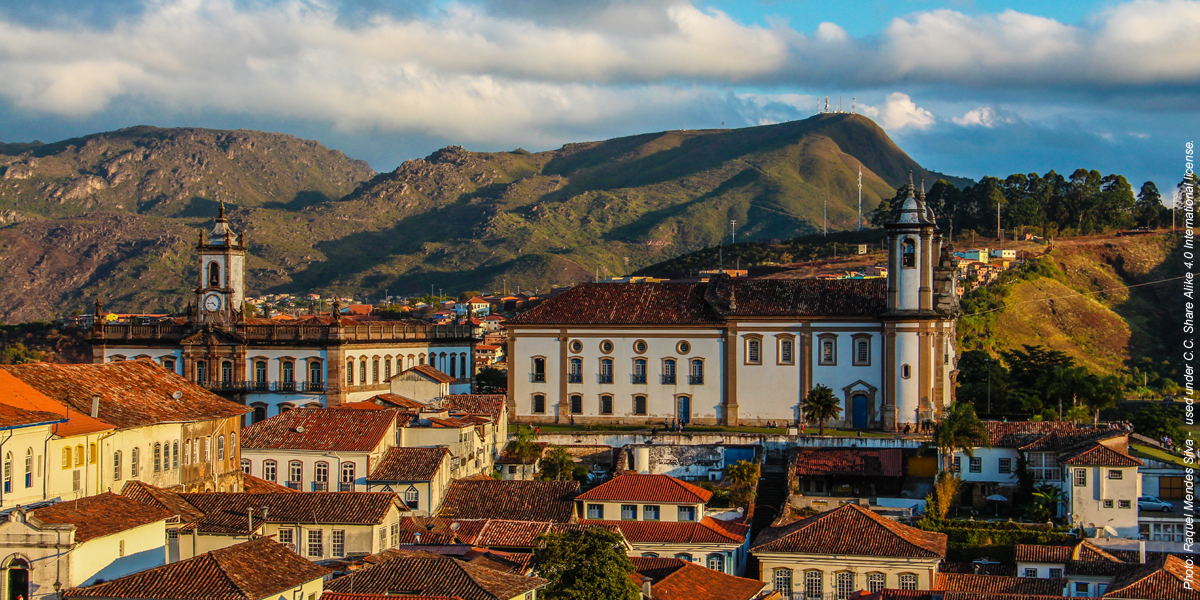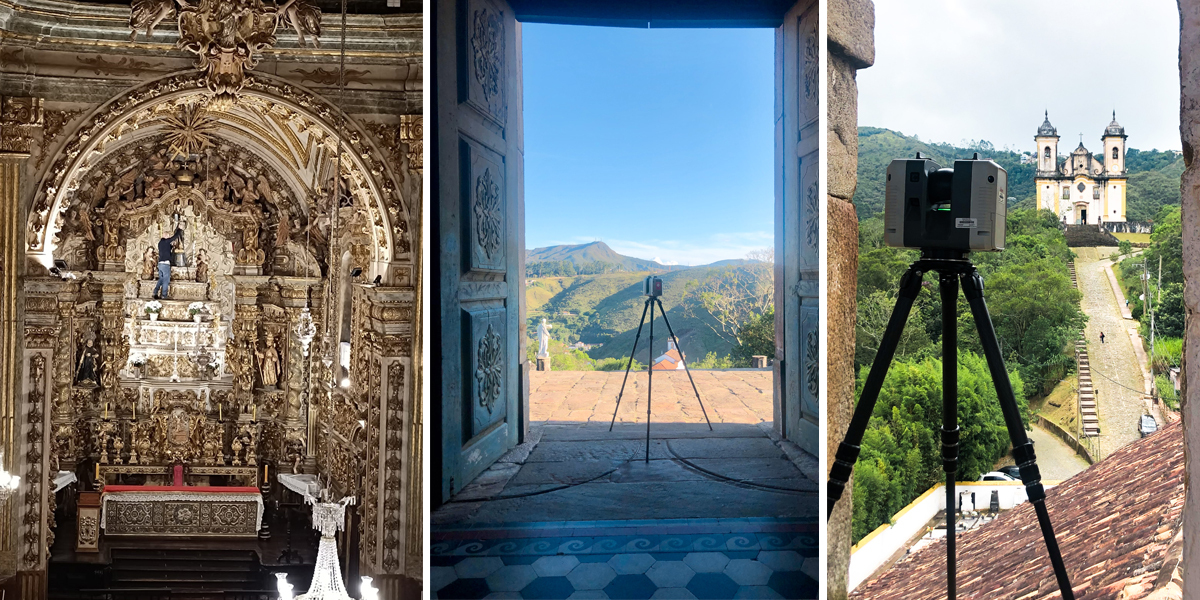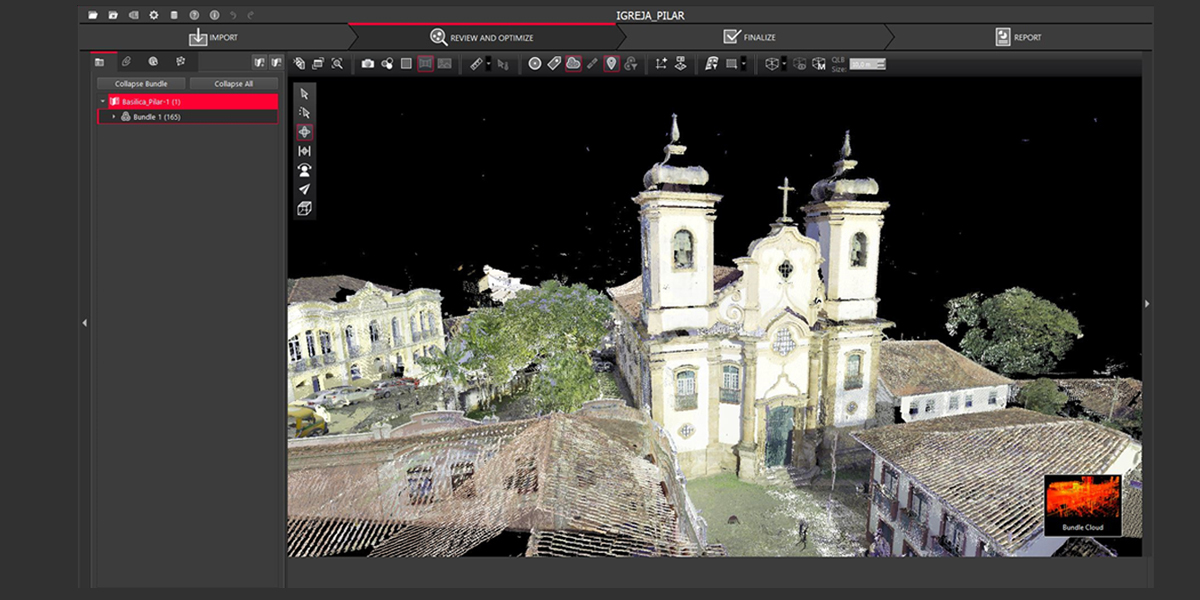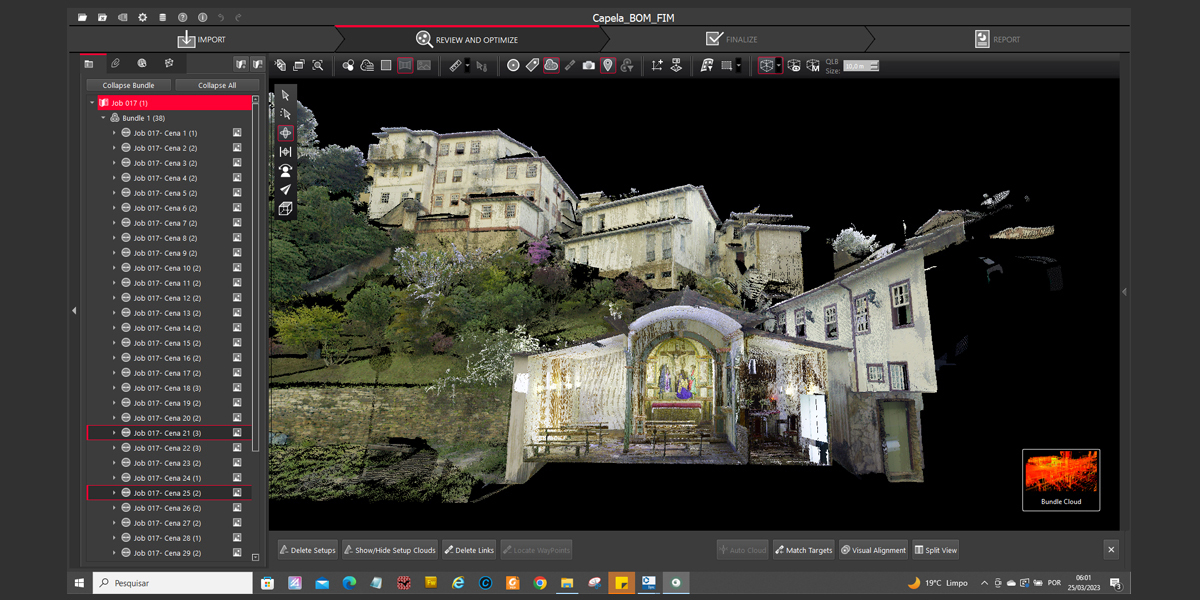Megan Hansen of Hexagon Geosystems reports on how Brazil is preserving the history of the Ouro Preto UNESCO World Heritage Site using HBIM, a blend of Laser Scanning, photogrammetry and BIM that is specifically designed to support the management, maintenance and restoration of cultural sites

Surrounded by thickly forested mountains in Brazil’s Minas Gerais region, the highly preserved city of Ouro Preto stands at the confluence of past and present – cars venture past towering Baroque cathedrals on original serpentine cobblestone streets, bastioned by rows of white homes with red tile roofs and colourful trims.
With many 18th-century art-filled churches spanning the city, it is no wonder Ouro Preto gained UNESCO Heritage status in 1980. However, the recent destruction of cherished heritage sites in Brazil and across the world has made clear the need for new approaches to conservation. For these reasons, Brazil’s Cultural Initiative Project is collaborating with laser scanning expert Rafael Rigoni to digitally capture, preserve, and protect the churches of Ouro Preto area including nearby Mariana and Cachoera do Campo.
The project, called Ouro Preto para Sempre (Ouro Preto Forever), uses heritage building information modelling (HBIM) to digitise sites in a way that provides more than a record of Brazilian heritage – these models become living, enriched data resources accessible to a range of stakeholders for building management and maintenance, community experiences, academic research, and even restoration or disaster recovery efforts.
One Region, 24 Baroque Churches
Ouro Preto rose to swift wealth and prominence as the region’s capital during the Brazilian gold rush that began in the late 17th century. The political elite made significant investments in the area’s architecture and art to reflect this status. There is perhaps no better example of this than the 24 baroque cathedrals located throughout the Ouro Preto region, each one a unique monument to Brazilian history and culture.
At the conclusion of the gold rush, Ouro Preto ceased to be an economic centre, stalling expansion which, along with its geographically protected location, helped preserve the city. Now more distinguished for tourism than gold mining, Ouro Preto’s treasures lie not only in the region’s natural resources, but in the historic cathedrals that populate the area.
Services are still held in these churches as community members gather under high archways, expansive frescoes, and intricate golden sculptures – an aesthetic reminder of the era during which they were built. Many smaller chapels in and surrounding the city add to the wealth of cultural heritage that defines Ouro Preto.
HBIM for preservation and restoration
However, as recent disasters have shown, structures that have survived for centuries are not immune to contemporary threats. For example, Mariana’s Church of Our Lady of Mount Carmel (1784-1835) suffered fire damage resulting in the loss of a rococo ceiling painting by renowned artist, Francisco Xavier Carneiro. In response, the Ouro Preto Forever project is taking active steps to preserve the past using laser scanning technology, photogrammetry, and additional data sources to create heritage building information models (HBIM).
HBIM, a relatively new application of BIM, moves the focus from the construction of built environments to the preservation of cultural sites. The wealth of information available with HBIM simultaneously enables the management, maintenance, and restoration of heritage structures, alongside documenting and sharing the cultural significance.
HBIM also empowers interdisciplinary teams of cultural preservationists to capture different historical stages of a building through simultaneous models and build a robust information collective that represents not only geometries of structures and objects, but also information about building materials, including provenance, historical or artistic context, and more. Should disasters occur, HBIM also makes damage analysis and restoration planning more accurate and efficient.
Data capture with laser scanning
Given the rich cultural and artistic history encapsulated in each of Ouro Preto’s churches, preservation through HBIM enables the greatest impact of digitally captured data enriched with additional information. To capture this data and create the models, Ouro Preto Forever teamed up with BIM Professor and laser scanning expert, Rafael Rigoni to scan and model all Ouro Preto’s churches, along with other important sites around the region.
“Recently, with the fire at the National Museum of Brazil where almost all the art and sculptures were lost, we saw how quickly a simple spark can cause a disaster,” contextualises Rigoni. “The churches at Ouro Preto were constructed with wood and stone and are very susceptible to fire, and we could lose all the historic art held there.”
As a measure against such loss, the digital preservation project is more than a record – it will also be a significant resource.
“The main object of the Ouro Preto Forever project is to make a digital twin of these churches with reality capture technology, make 3D models for presentation, and share the data with the community. These models will also help enable maintenance and preservation of the art and culture for the next generations.”
For this reason, Rigoni not only scans all the architectural details, but the artistic ones as well.
“Once we have the 3D point cloud of the churches, which include the interiors and artefacts like sculptures and art, we can make 3D print replicas of the statues – we can reconstruct this art,” he emphasises.

High accuracy captures in challenging spaces
Rigoni and team have scanned 25 sites, including Igreja São Francisco de Assis (1765-1812) featuring an expansive painted ceiling by Brazilian baroque-rococo painter, Manoel da Costa Ataíde, and Matriz do Pilar (1712), the most expensive church in Brazil decorated with 400 kg of gold.
To capture full and accurate data, Rigoni often needed to scan in challenging spaces – from securing 360-degree scans of detailed, ceiling-high altar pieces to capturing roof beams in spider-infested attics.
“The most important thing is to have a precise, millimetre-level 3D model of the whole church,” says Rigoni. “This is why we access and capture special areas like behind altars or up in the bell towers.”
“Leica Geosystems has supported this project by lending us the RTC360 and the BLK2FLY, providing a full solution for scanning,” explains Rigoni. “With the RTC360 laser scanner, we can go inside tight spaces to scan from very narrow angles. We make scans of the roofs and other exterior features that the terrestrial laser scanner can’t access with the BLK2FLY.”
Navigating captures in remote spaces, Rigoni must ensure that in the process of trying to preserve these churches, he does not unintentionally damage them.
“When scanning the roof’s wooden beam structure, one missed step could result in ruining a priceless heritage painting,” he reflects. “At the same time, the roof’s inner spaces were often extremely tight and dark, with poisonous spiders.”
One of the most challenging spaces to scan was a small chapel located just outside Ouro Preto in nearby Mariana. The Chapel Gruta da Lapa is built into a cave – bringing spatial, lighting, and wildlife complications to the scanning process.
“In this location, I had to be cautious not to hit the scanner and my head against the inner stones, along with avoiding the bats.”
Despite this, he was able to capture four inner rooms accessed from the cave’s labyrinthine pathways.
HBIM and access to cultural heritage
Scanning is only the beginning - the project continues with the creation of HBIM models that will benefit a range of stakeholders.
“We have captured all the sites, and now we are creating an HBIM of the churches by combining the data with historical documentation,” says Rigoni.
Creating comprehensive HBIM models, however, is not without its challenges: working with data-heavy point clouds and models makes storage and sharing difficult, and the unique structures rarely conform to object classifications, making time-intensive manual modelling necessary. Nonetheless, Rigoni and team have already created a range of deliverables that provide information access to key stakeholders.
For the community, this includes publicly available 3D models enhanced with historical annotations to enable interactive experiences. Additionally, the geometric accuracy contained in the models provides the foundation for virtual reality visits that extend beyond touring to applicability for students and researchers who can conduct rigorous work, from art history to surveying, at otherwise inaccessible sites.


However, the Ouro Preto Forever project’s mission of accessibility does not stop there.
“Everyone should be able to explore these sites,” emphasises Rigoni. “For this reason, we have also created 3D printed models of the churches so blind visitors can experience them.”
For building management and maintenance, the HBIM models are provided to the priests as building owners and are used by specialists to create precise 2D architectural drawings. When fully deployed, the HBIM models will also be connected to the churches’ current Internet of Things (IoT) systems, to build comprehensive live data exchange networks.
“We will have the opportunity to create digital twins connected with IoT by linking the 3D models with fire sensors, cameras, security systems, and more on site at the churches,” Rigoni explains. “These resources can be handed over to government officials, priests, and other stakeholders for more effective facility management and disaster response, if necessary.”
The work of Rigoni and the Cultural Initiative Project demonstrate how processing and connecting the digital data captured by laser scanning technology to other systems and data sources expands what is possible in heritage preservation and restoration, ensuring cultural treasures like the churches of Ouro Preto will be available for generations to come.
Megan Hansen is the Marketing Manager at Hexagon Geosystems
Subscribe to our newsletter
Stay updated on the latest technology, innovation product arrivals and exciting offers to your inbox.
Newsletter

